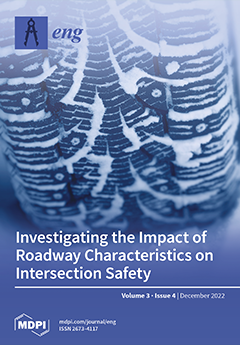Open AccessFeature PaperArticle
Geomechanical Feasibility Analysis of Salt Cavern Gas Storage Construction in Sanshui Basin, Guangdong Province
by
Haitao Li, Qiqi Wanyan, Guosheng Ding, Kang Li, Yanxia Kou, Song Bai, Lina Ran, Jianan Wu and Jingen Deng
Cited by 11 | Viewed by 3981
Abstract
Salt cavern gas storage has become the key project of current and future underground gas storage (UGS) facilities construction due to their efficient peak-shaving and supply assurance capacities. The Sanshui Basin in Guangdong Province, China, is rich in salt resources and has high-purity
[...] Read more.
Salt cavern gas storage has become the key project of current and future underground gas storage (UGS) facilities construction due to their efficient peak-shaving and supply assurance capacities. The Sanshui Basin in Guangdong Province, China, is rich in salt resources and has high-purity salt rock, which is a potential area for the construction of salt cavern underground gas storage. To speed up the large-scale construction of underground gas storage in China and promote the sustainable development of the natural gas market, it is very necessary to analyze the geomechanics of the target salt layer and study the feasibility of gas storage construction. Based on comprehensive experiments of rock mechanics and thermodynamics, the strength, creep and temperature-sensitive mechanical properties of the target rock in Sanshui Basin were studied. Then, according to the geological conditions of Sanshui salt formation, a three-dimensional geological model was established to analyze the stability of salt cavern gas storage under the injection-production operation. The results show that the average tensile strength and uniaxial compressive strength of salt rock are 1.51 MPa and 26.04 MPa, respectively, showing lower strength. However, under triaxial compression, the compressive strength of salt rock increases significantly, and there is no obvious shear failure phenomenon observed. Moreover, after the peak strength, the salt rock still has a large bearing capacity. In addition, under the confining pressure of 30 MPa, the strength of salt rock decreases by 8.3% at a temperature of 60 °C compared with that at room temperature, indicating that the temperature has a low, modest effect on the mechanical properties of salt rock. The stability analysis shows that, under an injection-production operating pressure of 10–23 MPa, the displacement, plastic zone range and volume convergence rate of single cavity and cavity group are small, and the cavity shows good stability. Overall, the target salt formation in Sanshui Basin, Guangdong Province, presents a good geomechanical condition suitable for the construction of underground salt cavern gas storage. This study can provide a reference for the development and design of salt cavern UGS.
Full article
►▼
Show Figures





